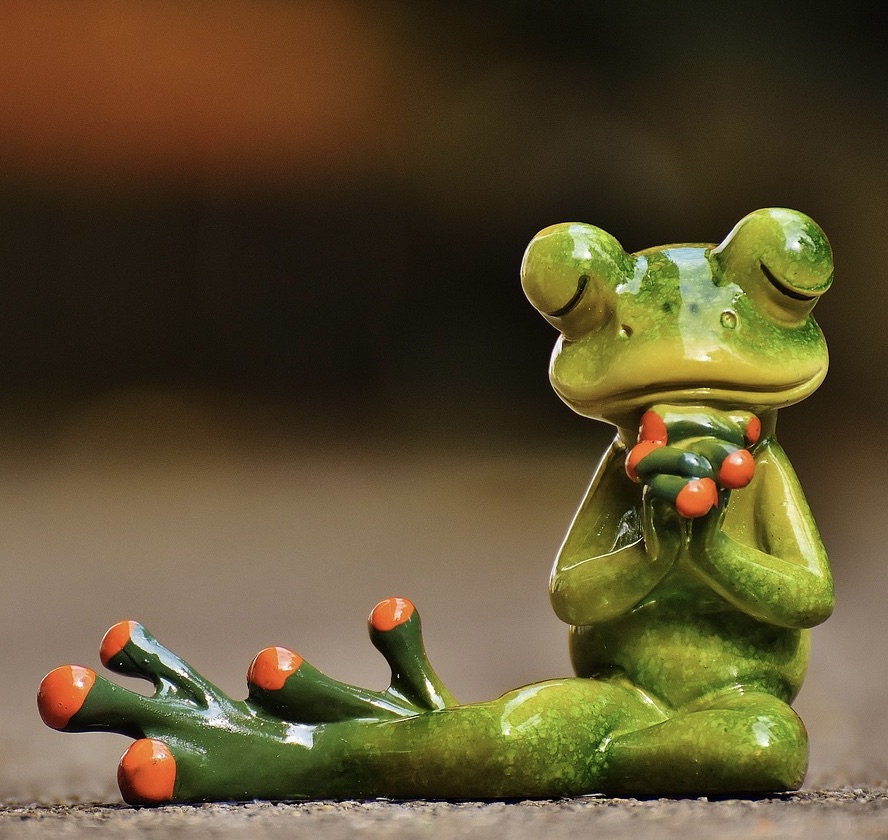Welcome to the first of our correspondences with artists. These back-and-forths take place “at length” over email, closing two weeks from the time the first question is posed. Each will begin in consideration of one work by the artist, breaking away (or not) from there. —Elaine Bleakney
James Kao was born and raised in Houston, Texas. After studying philosophy and focusing on the texts of Ludwig Wittgenstein at the University of Chicago, he worked as a bakery buyer for a specialty foods retail chain in Southern California. In 2001, James forwent his corporate career and returned to Chicago to take classes at the School of the Art Institute of Chicago where he received an MFA from the Painting and Drawing Department. Born in 1975, James works, teaches, and lives in Chicago, Illinois. He is currently preparing for two upcoming solo exhibitions: “Ways of Worldmaking” opens on September 12, 2009 at Lloyd Dobler Gallery in Chicago and “Possible Worlds” opens February 4, 2010 at Toomey Tourell Fine Art in San Francisco. More information is available on his website: jameskao.org.
AL
Looking at “Tillage,” I’m immediately drawn into the painting on the hinge of its title: “tillage” as both the cultivated land and the act of cultivation. I’m interested in how this title-as-hinge arrived. How does language enter into your process?
JK
I have been thinking much about the difference between simile and metaphor, e.g. a picture that looks like a world versus one that becomes a world, and I think art has the capacity to occupy a space in between simile and metaphor as well-looks like a bird, is a bird, looks like a shape, and now its cardinal red. This liminal space recalls Heidegger’s conception of earth and world where he offers a remarkable image of an ancient Greek temple, constructed of granite and seemingly crumbling with age. Heidegger counters that the temple is not deteriorating; rather, it is the earth that is jutting through the world of this temple. Yes, the earth is breaking through hallowed grounds! In this collision, in this in-between moment, Heidegger suggests that Truth is unconcealed.
Heidegger praises poetry as the highest art form because poets use language to reach beyond language’s grasp, I think wherever language fails, there arises a real opportunity for art to function.
AL
Do you find that it’s hard work to access or sustain this liminal, in-between space where art happens? You keep oranges in your studio. How does their presence, the observing you do as they decay relate to keeping a painting like “Tillage” out of some kind of frozen granite world and more within a momentum, the kind of activity Heidegger points us toward?
And speaking of liminal, active space: right now a group of very tired Bangladeshi men are chipping away at the side of our building. The other day, they removed twenty, thirty, fifty (?) years worth of ivy that had crawled up to cover the wall. It was slowly eating the brick. Our windows, stripped of coverage, now have what feels like too much.
JK
I wonder if your elderly building feels shame-shame from giving itself to the ivies, shame from being naked. The loss of ivy-covered walls seems like a traumatic experience, the kind that can interrupt the flow of one’s qi. Light entering a window never seems too abundant.
I recently learned that I am a passive meditator; I find time to reflect without scheduling time to do so. I might spend a few hours looking into a fish tank, a ceiling fan, or aging citrus fruit, and during these moments, time slows down and radio sounds fade away. Some sort of Truth is revealed here, something akin to art, I suspect. When I paint, when I work to create these liminal spaces in a picture, I must find deeper energies to concentrate, and this can be difficult.
AL
You live and work in Chicago. Do you find concentration difficult in a city (or more difficult than you imagine concentrating in a non-city would be?) Has the city influenced your work in specific ways?
(I miss the ivy’s shade. Now the front of the building-passerby, cars jockeying for spaces, endless trash can collection-feels less absorbed. However, the new available light in winter may save me.)
JK
I’ve lived in large cities my whole life-Houston, Los Angeles, and Chicago — so I don’t really know what it would be like to live in a non-urban environment. Of course, each of these cities is very different from the other, and Chicago stands out because it transitions through the four seasons. Spring coming into Summer. Summer coming into Autumn. Autumn coming into Winter. Winter coming into Spring. In Chicago, I know, anticipate, and feel the seasons’ transitions. These shifts are markers of time, and in many ways, duration has become very important to my painting practice.
I live in a building built in 1909 and for several years grew to love the dusty and wooden window frames. They were turn-of-century examples of high craftsmanship. Alas, the windows were also terrible insulators, powerless against a Chicago winter, and the board voted to replace all the windows with new double-paned, vacuum-sealed, high-insulation windows. How much quieter the apartment became after their installation was unsettling.
AL
Would you talk a bit more about duration within your still-life paintings? When I look at “Tillage,” so much of my experience of the painting feels in opposition to “still life,” yet there is a sense of coherent boundaries, of abiding, discrete forms in-erosion. And yet “erosion” only seems to articulate one kind of moment within “Tillage.” I suppose my question is: how does painting your oranges differ to you from, say, filming their decomposition? What does painting do with watching them in time?
JK
I like things. Perhaps I should say I have a deep affinity for the world of objects, and here, I think, is a primary difference between painting and film. Where I may spend six hours watching Andy Warhol’s “Empire,” I may spend only a minute or two with my favorite Balthus painting at the museum. There is a more significant difference; after watching “Empire,” I am not compelled to see the film again. Balthus’s “Solitaire,” however, begs me to return. My close proximity to the museum allows me to comply, and each return visit with “Solitaire” yields new pictorial structures and previously undisclosed psychologies. Warhol’s film challenges me to endure, and Balthus’s painting demands perpetual return. Objecthood is bliss-this we know from Michael Fried.
Born of a long-term and unending engagement with fruit transformed into objects, I hope my paintings also beg their audience to return.
AL
I like things too. The poet Charles Simic wrote that “the mystery of the object is the mystery of a closed door.” Do you have favorite objects in Balthus’s “Solitaire”? Is there a sense you have, in his objects, of the kind of widening inaccessibility Simic notes?
JK
I like open doors, and I like opening doors even more. Norman Rush describes love as something similar to entering a new apartment, where you find the entry hall unimaginably wonderful. As you explore this vestibule, you come upon a door, open it, and find yourself in a room grander than the first. Another door, another room, and love becomes an endless corridor of captivating discoveries.
Similarly, “Solitaire” is full of doors waiting to be opened. Below the table, I enjoy the re-imagined furniture-a chair with four legs, or three, now five-a fresh clarity of space when both subtraction and addition appear, even as they cannot be distinguished. From the girl’s white-socked foot, clod in black shoe, Balthus casts a slender shadow; it points to a reflection on the heels of another chair’s support, and I sense an animal’s hoof . . . I am dreaming of Rush’s Botswana.
AL
The bulk of that “re-imagined furniture” sends me over to the girl’s arch, as well. Then back. A hoof! Yes. I also like the card in her hand as a tiny rudder to her mind’s work as she sails in the game. You’ve said in a conversation with your friend Aaron Walker, “I don’t know where the work in a painting takes place, but I do know that a painting can perform.” I’m reminded of it here.
Would you be willing to share an image of something new or newish you’re working on and talk a bit about it?

JK
I’ve attached an image of a painting currently in progress. It is not yet titled. The painting measures 72 x 78 inches and is oil on stretched canvas.
I’ve been traveling around the country and trying to make sense of different foods, dress, transportation, etc. — the various vernaculars of our world. This privilege has informed my sense of artistic responsibility to take the world in, to re-process it, and to re-present it. Over time, my oranges and table have given way to the idea of these re-imagined worlds. The large-scale of this canvas moves it away from an object to be gazed at and towards a world one falls into. I hope that the stormy clouds and floating orbs do the same.
AL
I like how this movement can be traced in the paintings you find affinity in as well. The leap in looking at your oranges into a view of Mondrian’s expansive “Pier and Ocean” (a painting you photographed during your travels this summer) is particularly striking. Do you like looking out the window in an airplane? Larry Levis has these lines from the poem “In the City of Light” about the vantage from a plane: “Descending, I looked down at light lacquering fields / Of pale vines, & small towns, each / With a water tower; then the shadows of wings; / Then nothing.”
JK
Clouds lend atmosphere in my recent paintings, and I’ve spent much time with an upward gaze. The taxonomy of clouds suggest four categories: cumulus, nimbus, cirrus, and stratus. I describe clouds in terms of weight, temperature, color, and of course likeness to familiar objects.
I think clouds also carry moods. I like clouds that shift from pink to yellow to violet. These are clouds that portend storms, and these are the same clouds that sunlight beams through as raucous weather breaks up. I imagine these are the clouds Noah espied when he emerged from forty days of rain.
When I look out the window of a plane in mid-flight, clouds become flat landscapes or seascapes; they become redundant. Somehow, being above the clouds lifts their force. They no longer float in the sky and lose their magic. I am uneasy when flying through patches of clouds. Within a cloud, always denser than I imagine, the sky disappears, and I long for Texas, where the vast sky is simultaneously airy and heavy.
I do my best to claim a window seat when flying into LaGuardia Airport. The final descent is otherworldly — the city is a scaled-down model of itself, and then I am swallowed by its enormity.
Gallery images include:
- Still Life with Oranges, 2005, 42 x 40 inches, oil on canvas
- Aether, 2005, 22 x 22 inches, oil on canvas
- p. & o. ii, 2007, 12 x 15 inches, oil on canvas
- Mesa, 2008, 24 x 30 inches, oil on linen
- Seed, 2009, 10 x 11.5 inches, pencil on paper
- Seraphim, 2009, 34 x 36 inches, oil on canvas
- Tillage, 2009, 12 x 15 inches, oil on linen
- Untitled (Photograph of painting in progress, 72 x 78 inches, oil on canvas)


![Monument for Inger Christensen. Photo by David Stjernholm. Featured image for [o] by Kristi Maxwell.](https://atlengthmag.com/wp-content/uploads/2025/06/Monument-for-Inger-Christensen_Kaare-Golles_002_Photo-by-David-Stjernholm-1280x914-1.jpg)
